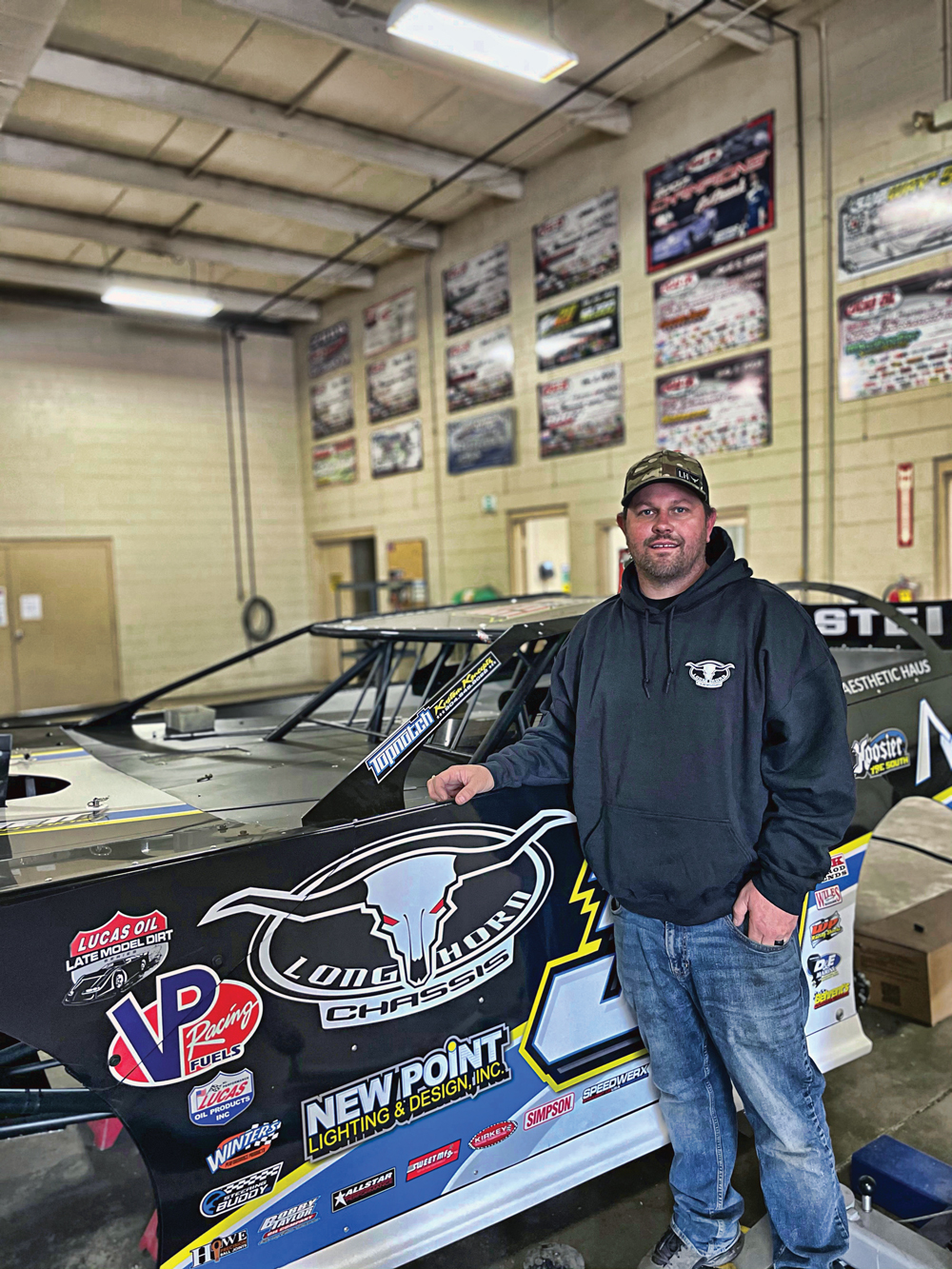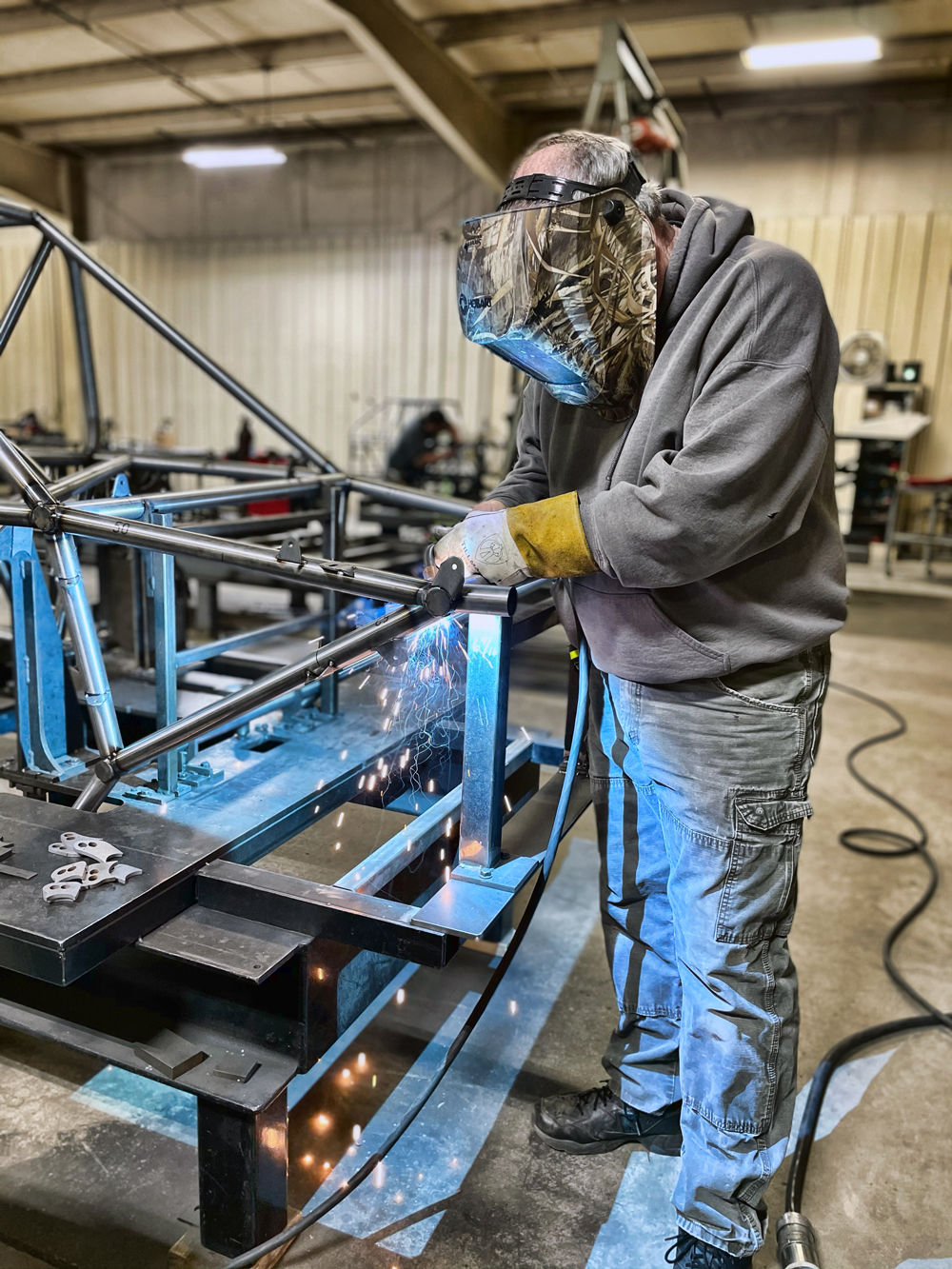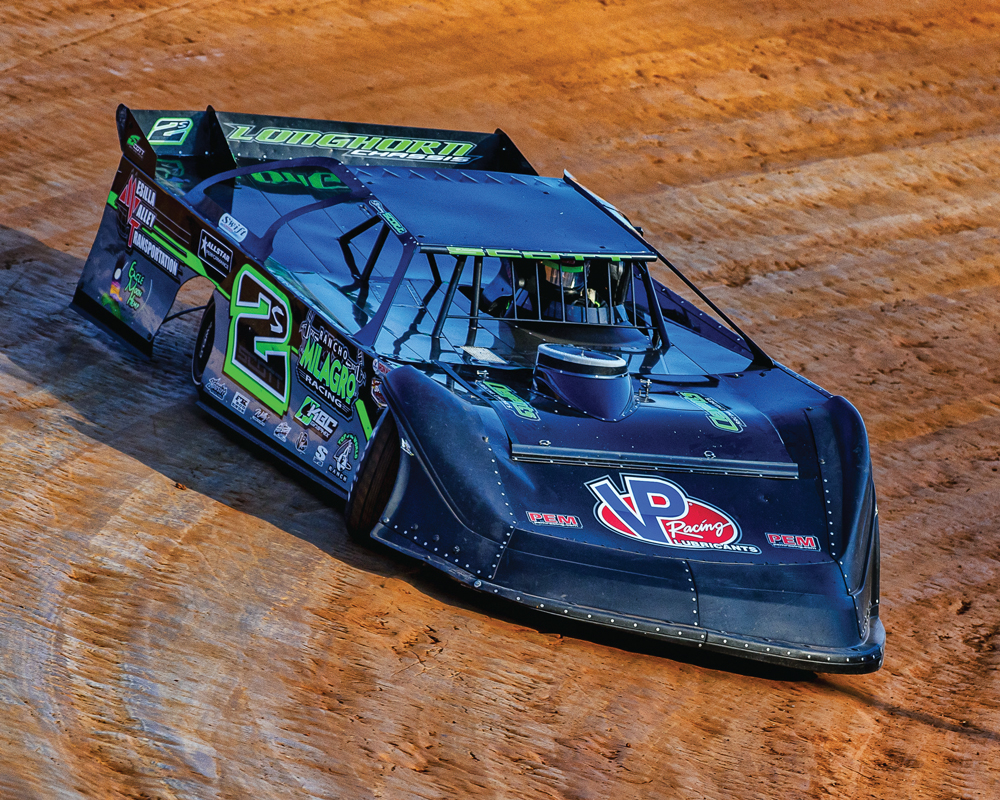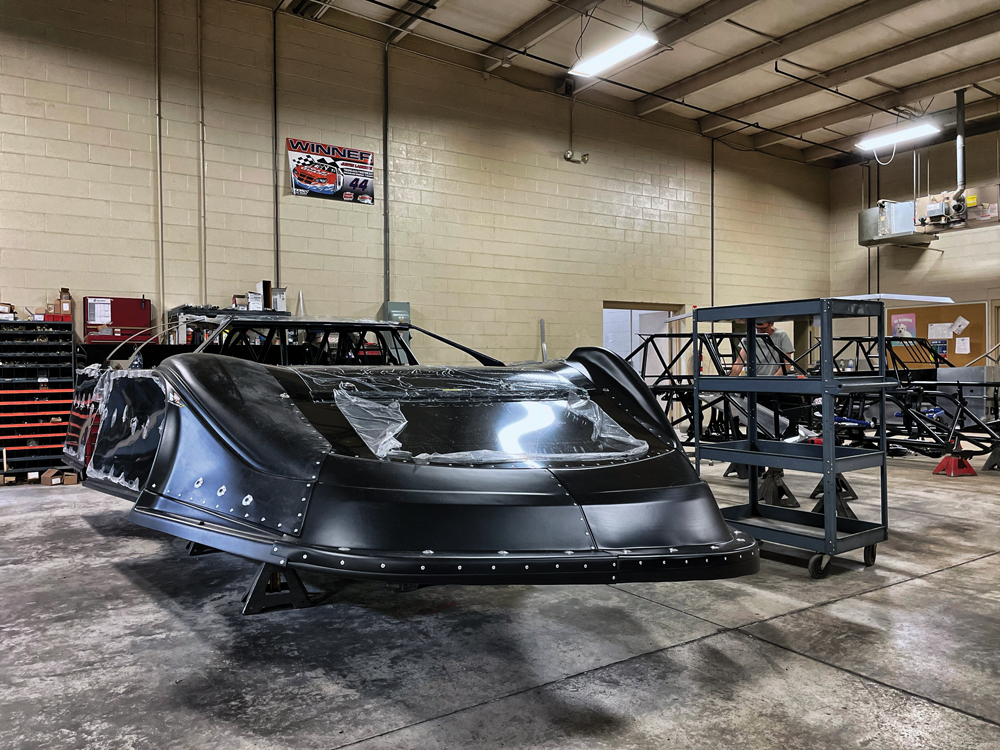Business Profile: Longhorn Chassis
One of the preeminent families in NASCAR has shifted its heralded paved stock car operations to dirt ovals, producing dominant dirt late model chassis and propelling its drivers to frequent podium finishes.
As the latest chapter in the Labonte family racing tradition, Longhorn Chassis sprang to life in 2010 and quickly became a force in dirt late model competition.
The Trinity, North Carolina-based operation has since added modifieds to its chassis lineup, and now turns out about 100 cars a year. With multiple national championships to its credit and wins too numerous to count, the builder has solidified itself among dirt racing’s elite.
NASCAR and IROC champions and NASCAR Hall of Famers Terry and Bobby Labonte moved on from their own illustrious racing careers to start Longhorn with Terry’s son, Justin, who runs the day-to-day operation. A former NASCAR Xfinity Series and Truck Series driver, Justin credits Longhorn’s success to the engineering direction provided by Kevin Rumley, a team of dedicated employees, and, of course, its cars being placed in the hands of top drivers.
Rumley, the company’s engineer since the start, has guided Longhorn’s chassis construction to provide consistent feel, resulting in early race wins and ultimately a customer roster filled with top dirt late model drivers.
“When we started, our cars ran so well, we were able to build a customer base quickly,” Justin Labonte told us. “Jonathan Davenport and the Lance Landers team have been a big part of our success. Now we have many more great drivers and teams running our cars, getting great results and driving growth. Our core group of teams has some of the sport’s best drivers.”

Among them are Tim McCreadie, driver of the Longhorn house team car; three-time Lucas Oil Dirt Late Model Series champion Davenport; Stormy Scott; Jason Papich; Brandon Overton; and many others. Kyle Larson also has been running a Longhorn Chassis car for Rumley.
The success of its drivers—McCreadie was second in points in the 2020 Lucas Oil Dirt Late Model Series, and Davenport placed third—provides the foundation for Longhorn’s marketing: “For us, it’s winning races at the highest level,” Labonte said. “Winning drives our business.”
Getting Into the Dirt
Longhorn Chassis, which emerged out of Bobby Labonte’s foray into dirt racing, was run out of the 10,000-square-foot shop built in 1990 for Terry Labonte’s NASCAR Cup team. The shop remained the base for Bobby Labonte’s dirt racing team, which started out driving other builders’ cars.
“We’d had some cars from different builders and decided we could develop our own car and have more control over quality,” Justin recalled. “It just grew from there.”
Bobby ended his racing operation in 2004 to focus on Longhorn full-time. Though founded by NASCAR champions, Longhorn has never rested on those laurels, but rather built itself up on the merits of its product. Even not giving the business the Labonte name—one of NASCAR’s most recognizable—seems to have been an exercise in humility. The company name, Justin explained, came from the family’s Texas roots.
Writing a New Chapter
Longhorn’s 100-cars-per-year pace represents a substantial increase from its earlier rate, when that number was closer to about 25 to 30 machines annually. Labonte told PRI that the company is comfortable at the 100-car level. Longhorn currently sells through two dealers: Wells Motor Sports in Hazard, Kentucky, and Tye Twarog Racing in Coshocton, Ohio, which both handle their own finish assembly.
In fall 2020, Longhorn entered a new joint venture called Longhorn Modifieds by Loenbro Motorsports to build dirt modifieds. In the new collaboration, Loenbro Motorsports of China Grove, North Carolina, will assemble cars on Longhorn Chassis, with Steve Arpin heading the operation at Loenbro. Arpin is a successful competitor in rallycross, dirt modified, ARCA, and NASCAR.
“They ran well out of the box,” Labonte said about the Loenbro cars. “It’s worked out really well. Their backlog is pretty big right now.”
Arpin, too, was enthusiastic over the early results. “It’s been a whirlwind since we hit the ‘go’ button,” he said. “They have produced a great car, and we have been working back and forth together on growing it going forward. Now that we are more involved with them, it’s easy to see why they are consistently on top of the major late model events around the country. The future looks exciting.”
A Tight Crew
At its core, Longhorn is a family operation. Most of its 12 employees have been with the company for several years. Among the crew are five techs who build frames, as well as machinists and a parts manager. Head fabricator Scott Newton and parts manager Tommy Greco have been with Longhorn from its inception. About five years ago, Dave Dunlap joined the company to manage production, which increased with new efficiencies and equipment in place.
“We’ve got a good, tight crew,” Labonte said. “That’s been very helpful for continuity. Most have been with us from the start, including our setup guy. He goes to the track every week. That has been instrumental in development, as has having a house team.”
Being in close proximity to numerous NASCAR team operations in North Carolina has always helped Longhorn source qualified employees. But Labonte acknowledged that recruiting skilled and experienced fabricators has become more challenging in recent years. He admitted that he doesn’t know the exact reason but speculates that it could be a generational issue.
“A lot of our guys retired from Cup teams,” he said.

When a fabricator is needed, the company relies on word-of-mouth and social media to convey a job opening. “We must have experienced people,” Labonte added, explaining that the company does not want to teach people their trade.
Nonetheless, a committed team has helped keep production rolling even through the uncertainty of COVID-19. “Dirt racing in general didn’t slow down much during the course of the year,” Labonte said. “We were in a strong position when it hit. We kept working on our cars and kept racing. It did not hurt us as much as it did some other companies.”
Although Longhorn, like other builders, did eventually encounter some material sourcing challenges due to COVID-19, Labonte said.
“Last year at this time we could get what we needed,” he explained. “[But] some things we didn’t think of became issues—getting some things from California in particular. Steel and aluminum prices have gone up. And it can be difficult to find a sheet of aluminum right now. I think a lot of stuff is just sitting in ports waiting to be unloaded.”
Racers Building for Racers
Longhorn Chassis maintains all operations, including parts sales, under one roof—thanks in large part to its origins in NASCAR and dirt racing. The shop is well-equipped and maintains a pipeline to top technical talent.
As noted earlier, consistency is a hallmark across Longhorn’s dirt late model and dirt modified chassis. The shop boasts some of the latest in automated machinery, including a Flow waterjet cutting machine and a Bend-Tech Dragon plasma cutter. Labonte credited both tools with increasing production while ensuring precision and quality.
“We’re always looking at what kind of machinery can help our business grow,” he added.

Stormy Scott, who races the No. 2s Lucas Oil Late Model Dirt Series car, has two Longhorn Chassis cars and praises their consistency and parts shareability.
“Working with Longhorn has been an awesome experience,” Scott said. “They helped me get my first Super Late Model win. I’ve scaled both out, and they’re identical. They both drive identically. I can take both to the track and drive either one. We can pull shocks from one and put them on the other car. So, if I have to go to a backup, I don’t have to worry about anything. Everything comes off one car and fits on the other. We’re on the trail to be running better than we ever have.”
(Almost) Free Marketing
Promoting its accomplishments through social media, along with the always helpful word-of-mouth are the company’s primary—and practically only—marketing outlets. Justin’s wife Miranda and Kevin’s wife Jacqueline together manage Longhorn’s social media accounts. In particular, Miranda oversees Longhorn’s Facebook page while Jacqueline handles Twitter.
“We use social media to recognize our winners every week,” said Miranda. “We keep involved with our customers’ racing. We try to keep people as up to date as possible. We attend a lot of races, and Jacqueline is really great at live updates on Twitter. If we are there, we use our own photos, but if not, we have some great photographers that are always willing to supply us with photos.”
At press time, Longhorn’s Facebook page showed 33,000 followers, while its Twitter account had 14,500. Both actively engage with fans, too.
Looking Ahead
While pleased with Longhorn cars’ wins in 2020, Labonte is working hard to collect still more victories in the current season. “For this year in dirt late model there are a lot of big-money races,” he said. “We’re excited to be there with guys in our cars capable of winning. We’re expecting a fun and successful season.” As of late April, Longhorn Chassis had already notched wins with Davenport, McCreadie, Devin Moran, Overton, and Chris Hough, among others.

As for its business strategy and engineering plans moving forward, Longhorn remains focused on refining its products to keep drivers on the podium. “Cars evolve over the course of a season,” Labonte said. “Seeing how this season goes will determine our direction. The biggest thing with us is we are all racers. We just try to build the fastest, best quality cars that we can.”
 MEMBERSHIP LOGIN
MEMBERSHIP LOGIN JOIN PRI
JOIN PRI


